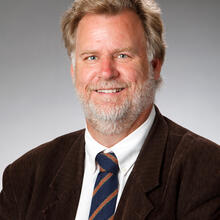The Gospel passage for today, Thursday of the Fifth Week in Ordinary Time, Mark 7:24-30, deals with Jesus’ encounter with the Syro-Phoenician woman, whose Matthean parallel I blogged about on three different occasions last Lent, here, here and here. In Mark’s version, as in Matthew’s, Jesus heals the woman’s daughter from a distance. In tomorrow’s Gospel passage, Mark 7:31-37, Jesus heals up close and personal. It is in stark contrast to the hands off approach of the passage prior to it, for in this passage Jesus “put his finger into the man’s ears and, spitting, touched his tongue” (7:33). The contrast with the account of the Syro-Phoenician woman does not seem to be a distinction between faith, hence no physicality is required, and lack of faith, and so Jesus must “touch” him and make manifest and real what has been done, for in both cases others, the mother in vv.24-30 and a group of friends in vv.31-37, bring the case to Jesus and exhibit faith on behalf of those who are ailing. Is the difference of approach based on the type of ailment? Jesus’ power does emanate from his touch, as we see in chapter 5 of Mark with the woman who has a hemorrhage and the girl who has died (5:27-30, 41-42), but it is not necessary it seems that it be a particular type of sickness to be healed from close or afar. Maybe it is simply that the man who is deaf and has a speech impediment is by Jesus and so Jesus will, literally, reach out and touch him.
It is also possible, of course, that the healing, though done privately (“He took him off by himself away from the crowd:” 7:33), is done not just for the one who is healed but for the benefit of those who brought him and the crowd that had gathered. The detail in the account that Jesus is in the Decapolis (7:31) orient us to a Gentile crowd, just as the Syro-Phoenician woman is herself Gentile (7:26), and perhaps the actual healing done by the hands of Jesus awakens the crowd to the true power that resides in him.
Whatever the reason for Jesus’ hands on approach, if Jesus does want to awaken the crowd to his power, he has a funny way of dealing with the crowd after the healing: “He ordered them not to tell anyone” (7:36). Yet, “the more he ordered them not to, the more they proclaimed it” (7:36). Most of my students see this one manifestation of the “messianic secret” in Mark as a sort of reverse psychology – the more Jesus says no, the more the crowd says yes, thus spreading the message to more and more people. The question I have is what sort of message would Gentiles spread about this healer and wonder-worker? Is Jesus just another healer, such as those who were often associated with the gods in Greco-Roman paganism? Healing in general was associated with Temples, or an Asclepion, and was not usually associated simply with physical or scientific processes, but with the intervention of Asclepius or Apollo. Is Jesus just another god, or a channel for a god to the Gentiles?
“They were exceedingly astonished and they said, “He has done all things well. He makes the deaf hear and the mute speak” (7:37). The implications of the deaf hearing and the mute speaking, though, are a source of astonishment for the bystanders and friends, not a sign of the inbreaking of God’s Kingdom (see Luke 7:22 for Jesus’ response to John’s disciples on the signs of the Messiah – healing the deaf and the mute are amongst them) and all that will imply for Jesus and his followers: picking up one’s cross and following Jesus. The power is real, up close or at a distance, but it will involve more than simply astonishment at this healing; it will involve faith even when the power seems absent, far off and distant, or when it is up close and personal and it seems it is always and only about power. That is when one must remember that Jesus can heal anyone from anywhere, in ways that we might not expect or be prepared to encounter.
John W. Martens







